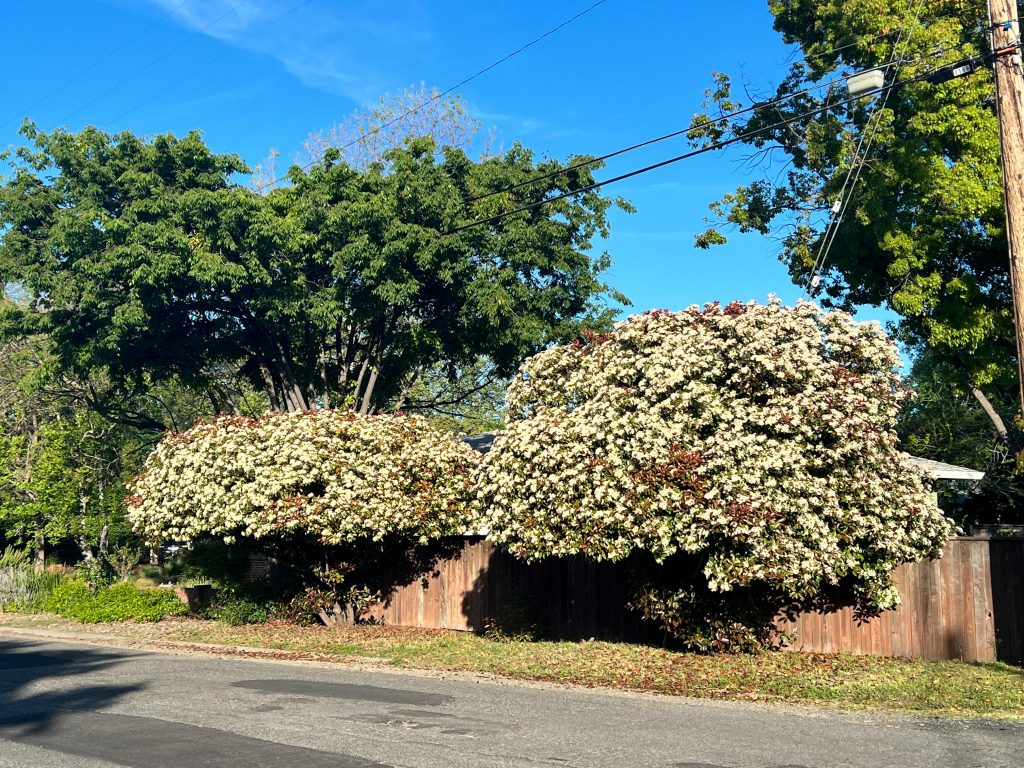It’s been a while (March 2022) since I’ve written “A Walk in the Park”. I’ve been walking some, just not writing. I had to take time off from walking last year as my knee was failing and it was too painful to walk. I now have two new titanium knees and have resumed my daily walking routine that started when we had to isolate from Covid. I have to say that after suffering with bad knees for over 20 years it is such a pleasure to walk without pain especially in Bidwell Park.
Bidwell Park is in its beautiful spring state, everything is a shade of green and just beginning to go into the seasonal death throes of California landscapes. The leaves of the oaks are translucent green allowing Sun’s light to filter through the canopies and give a bright look to the Park. In a few weeks they will be getting thicker and denser, not allowing as much light through. There have been a few rounds of flower blossoms since the start of the year. While not as spectacular as the flower show finishing up in Middle and Upper Park, Lower Park’s flowers are subtle yet just as beautiful. Native flowers dominate the landscape in Middle and Upper Park while invasive, non-natives dominate the landscape in Lower Park.
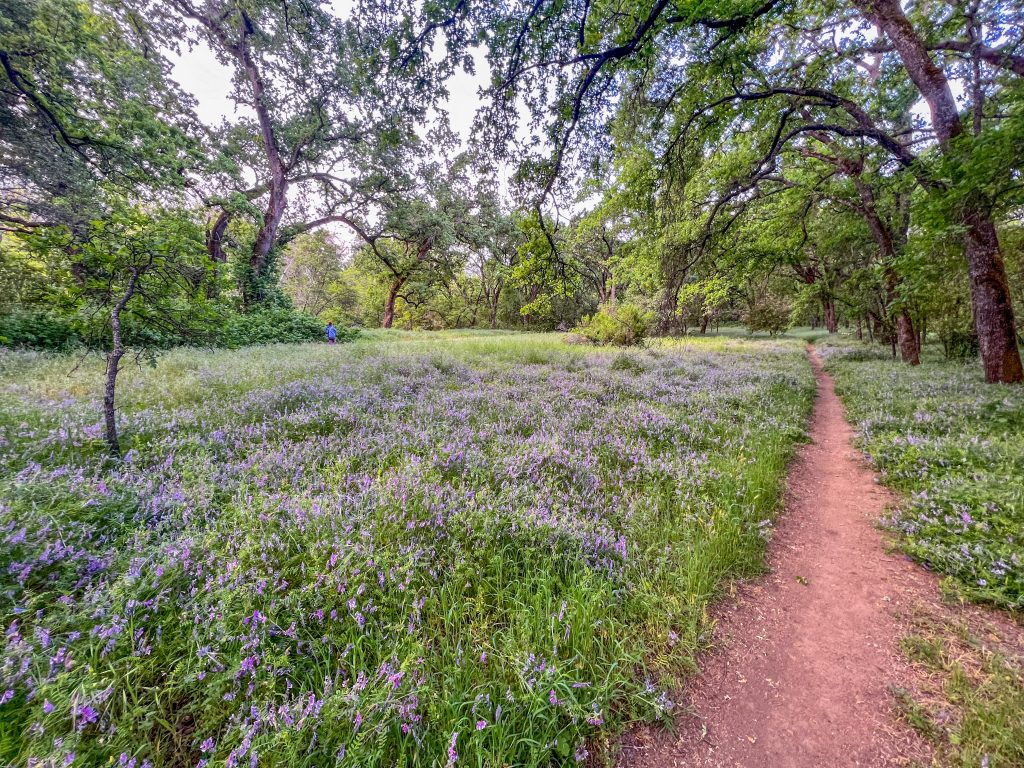
This year’s significant rainfall really got the Park growing after a few years of drought. Ground cover in Lower Park is two to three feet high and made up almost completely with non-native, invasive weedy species like vetch, ivy, periwinkle, and a variety of grasses. One of the few native ground cover plants in the Park, California or Dutchman’s pipevine (Aristolochia californica) can be found struggling to grow with vetch (Vicia benghalensis). The City’s use of goats in the fall after seeds have ripened has ensured the spread of this weed. It is now everywhere the goats graze instead of browse.
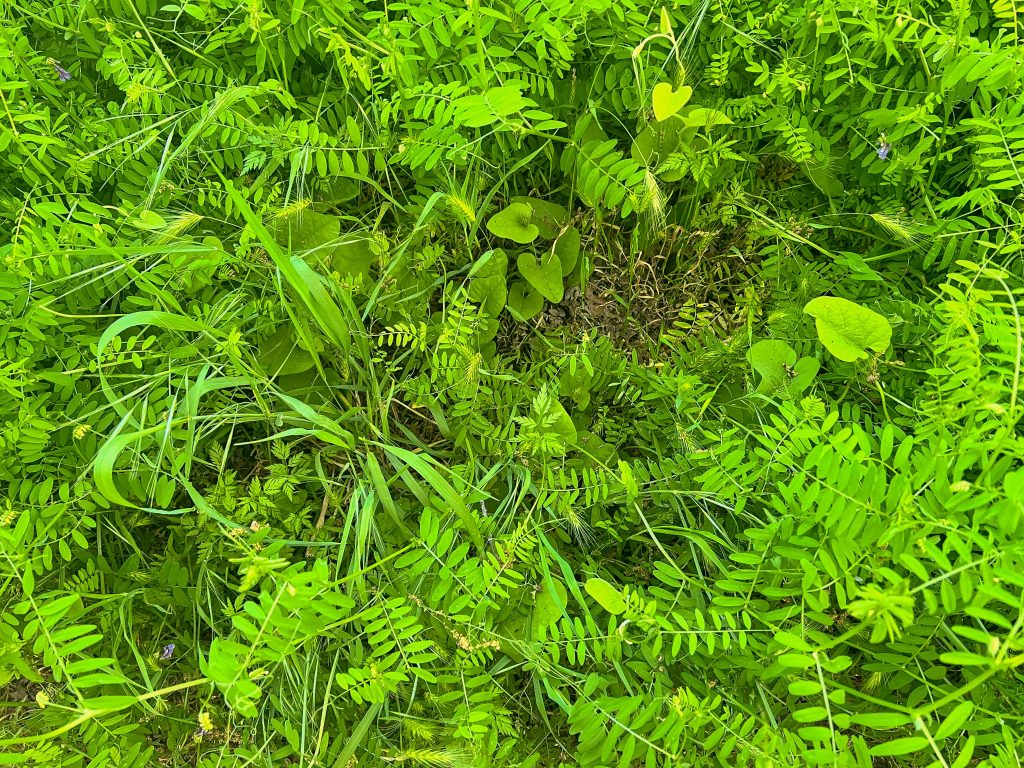
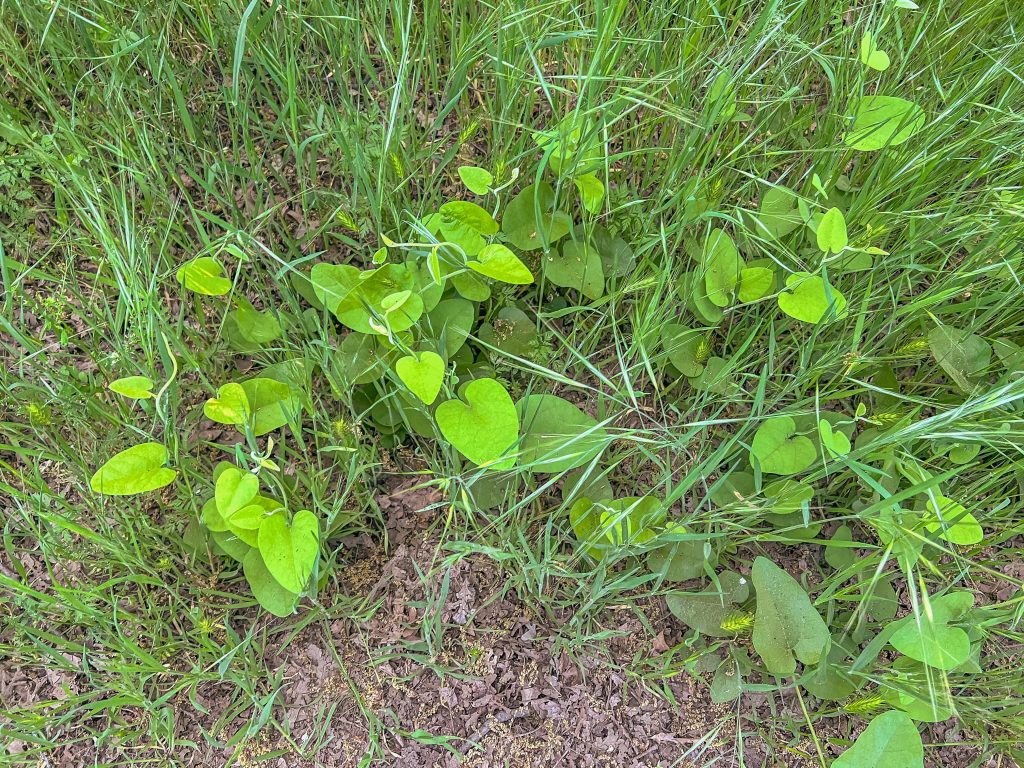
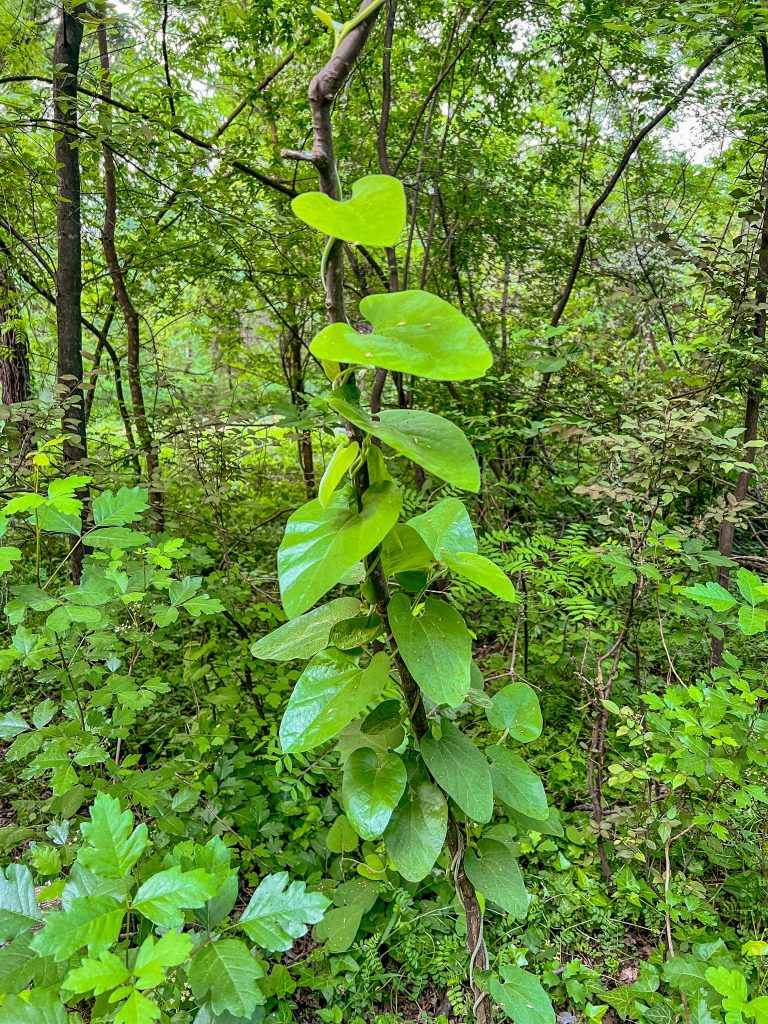
The City uses goats to control vegetation and “raise sight lines” (a failed method implemented to keep people from camping in the Park) in the fall after seeds have matured and set. This doesn’t control the amount of vegetative material as it is already died back and only ensures the spread of weed seeds powering vegetation growth the next year. Goats efficiently package weed seeds in their own little balls of fertilizer and spread them.
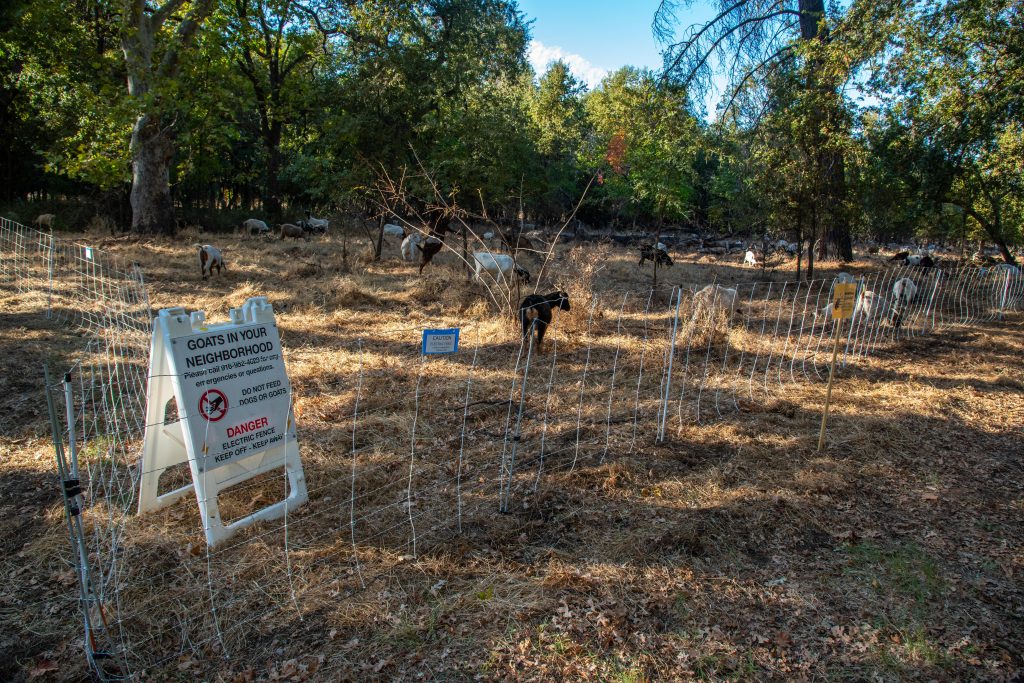
In case you didn’t know, goats are browsers preferring to eat from vegetation that is off the ground, like leaves and bark. When forced to, due to lack of browse, they will graze plants on the ground. They don’t seem to like the two biggest invasive weeds in Lower Park periwinkle (Vinca minor) and Algerian or Canary ivy (Hedera canariensis). You will notice goats rarely eat ivy on the ground but consume ivy growing up the sides of trees. They also do discriminate between invasive plants like Himalayan blackberry and native California blackberries. Instead of goats the City needs to bring goats in before the weeds seed and use control burns in Lower Park, but what do I know, I’m just a walker.
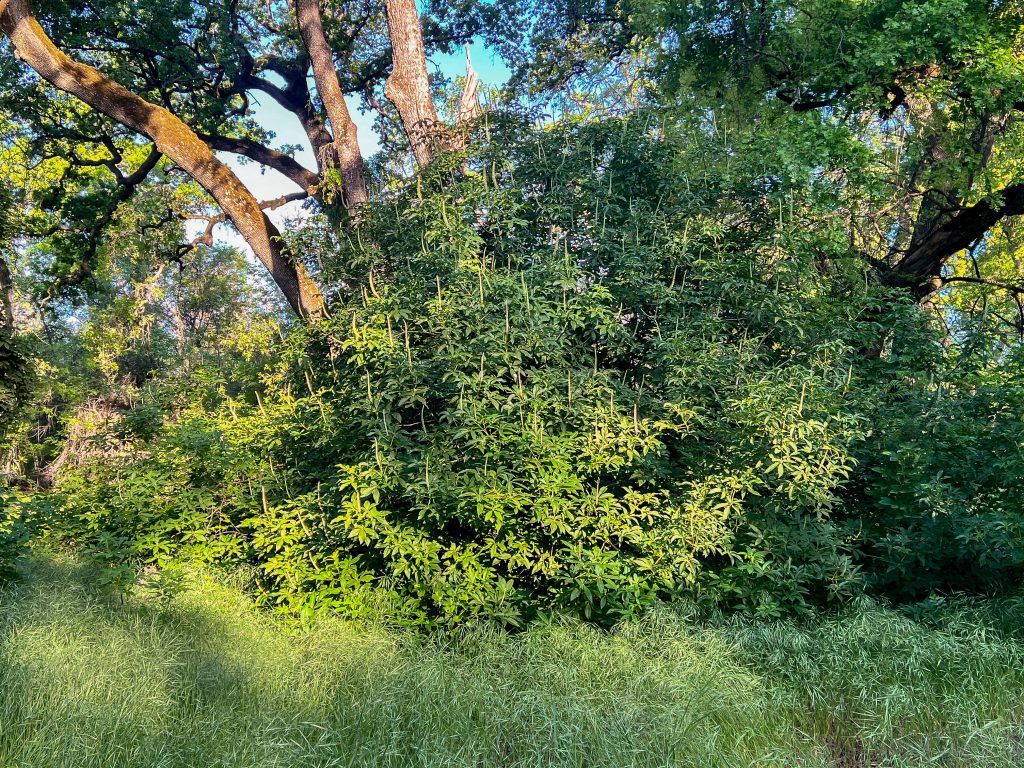
There are only a couple native trees blooming at this time in the park, California Buckeye (Aesculus californica) and Pacific Madrone (Arbutus menziesii). California Buckeye flower stalks have just come out and will be blooming in the next couple weeks.
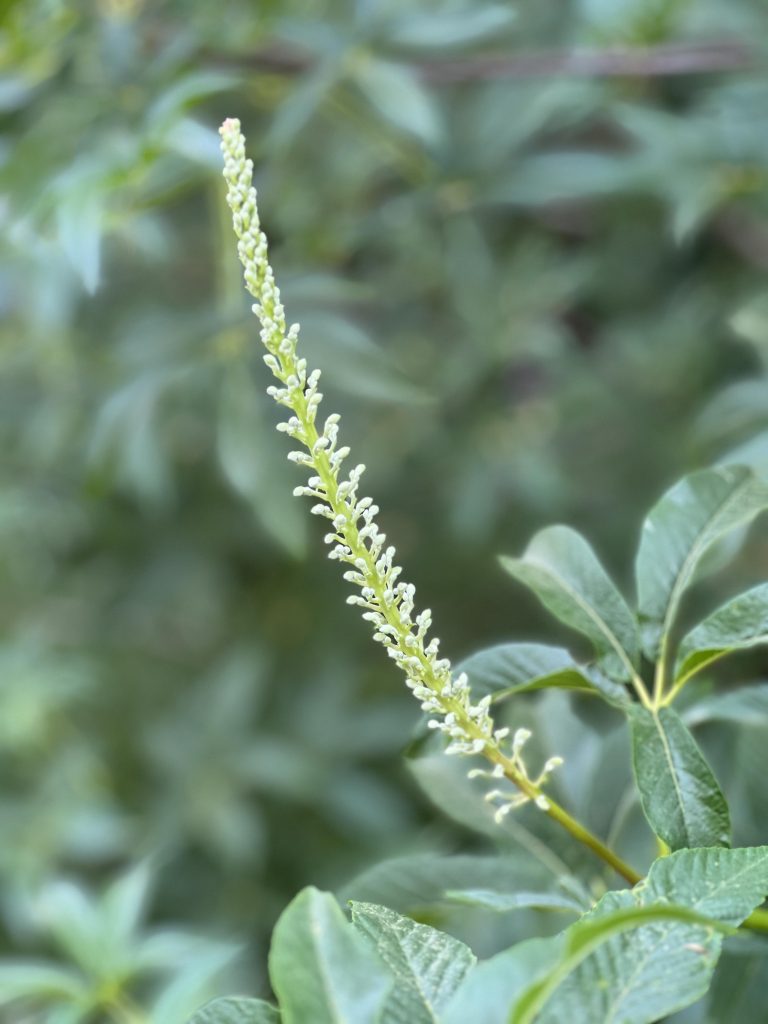
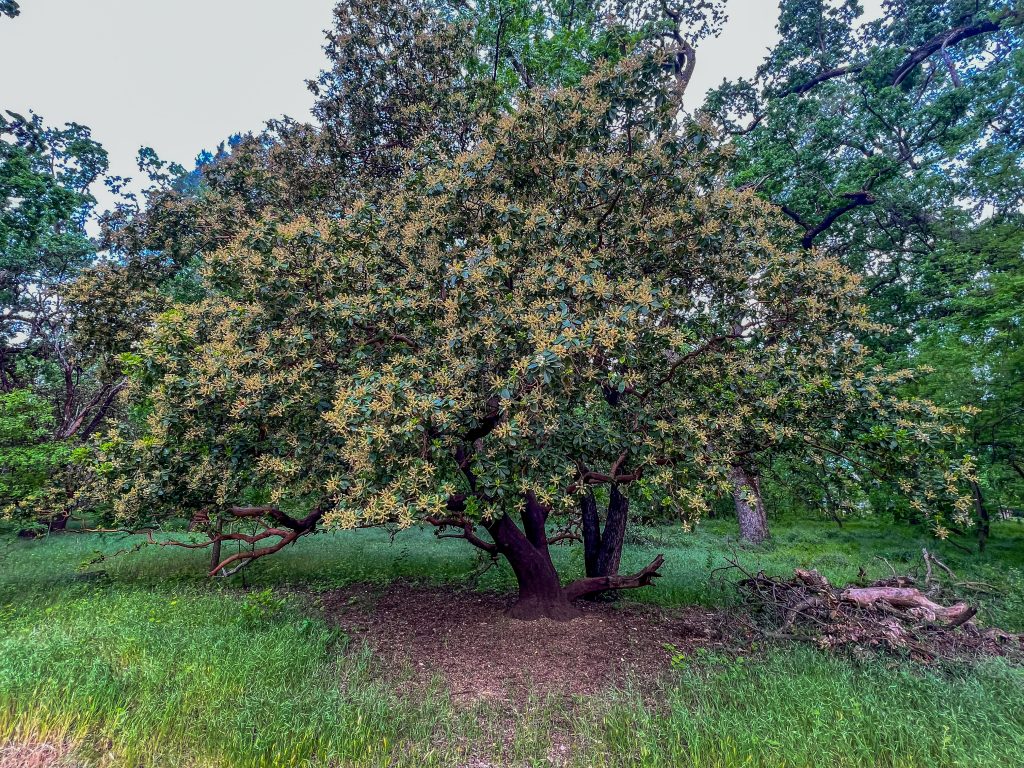
Madrone is at the end of its flowering cycle and the flowers are browning and falling off and seeds are setting. Unlike the invasive trees and shrubs spreading throughout the Lower Park, native trees are much fewer in number and not spreading.
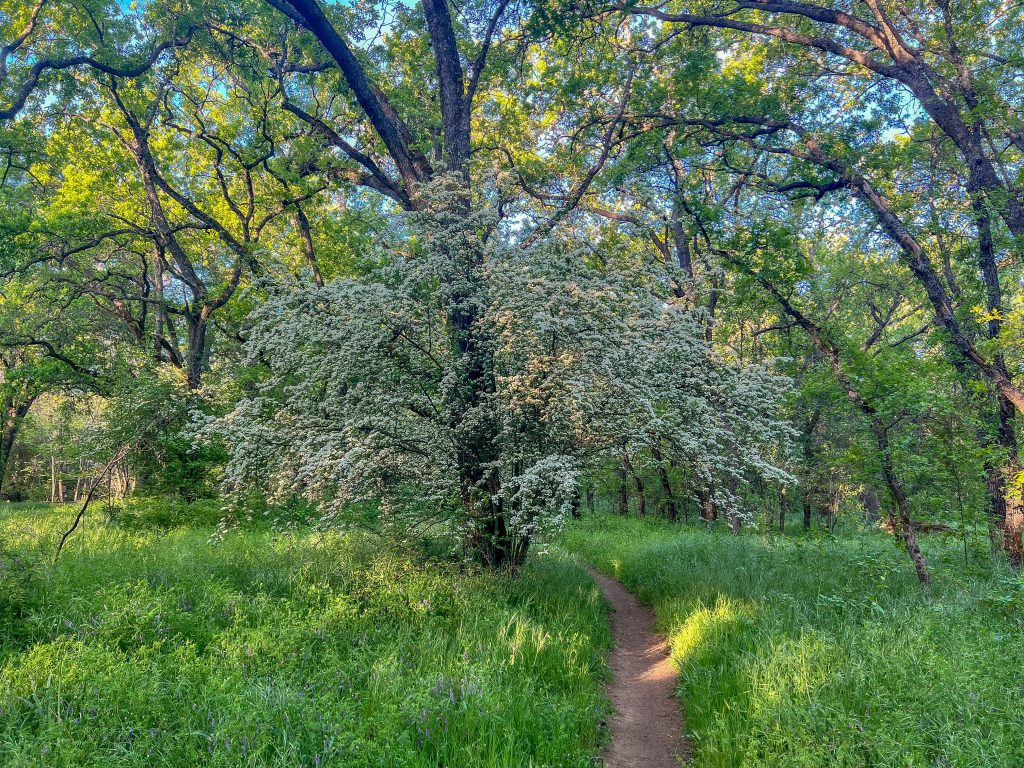
As you walk through Lower Park you will notice a lot of white blossoms. Back in January and February the blossoms would have belonged to the invasive flowering plum, cherry, and almond trees. For the past couple weeks the Hawthorns (Crataegus monogyna) have been blooming. They will be blooming through May. This is another one of those obnoxious plants that FOBP has spent hours removing and the City ignores.
Another invasive that has shown up in a few places in Lower Park and is in bloom now are the honeysuckles. A favorite flower of my youth visiting my grandparents in Ohio I would pull the tubular flowers off the calyx, pinch the base and pull the style and stigma out which would force the nectar to puddle up at the end of the flower tube, then lick it off. The sweet nectar was very appealing but not very filling.
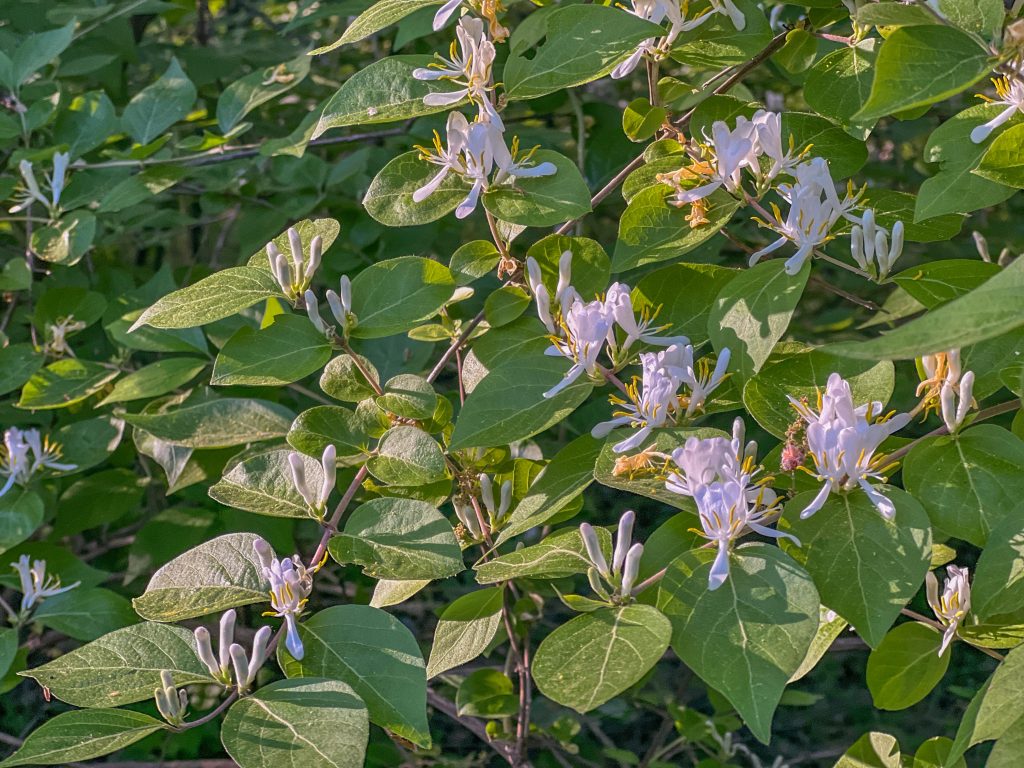
A favorite flowering yard shrub around Chico and an aggressively invasive plant is the Taiwanese photinia (Photinia serratifolia). It has been in bloom in the Lower Park and all over town for over a month. These haven’t spread a much as the Hawthorn but they are spreading in the Park rather quickly over the past few years.

Photinias are one of the most invasive plants in Chico. They seem to have become the hedge shrub of choice. I am constantly removing photinia volunteers in my yard even though there are no photinias around my house or my neighbors.
